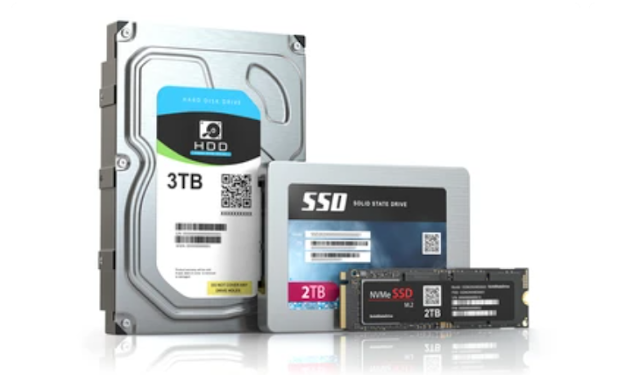What Is the Difference Between SSD and HDD Storage?
In the world of data storage, two commonly used technologies are Solid-State Drives (SSD) and Hard Disk Drives (HDD). Both serve the purpose of storing and retrieving data, but they have significant differences in terms of construction, performance, and price. Understanding these differences can help you make an informed decision when choosing storage for your computer or other devices. In this article, we'll delve into the key distinctions between SSD and HDD storage.
Construction:
- HDD: Hard Disk Drives consist of one or more magnetic rotating disks, also known as platters, coated with a magnetic material. The platters spin at high speeds, and data is read and written using a read/write head that moves across the surface of the platters.
- SSD: Solid-State Drives, on the other hand, use semiconductor memory chips to store data. They contain no moving parts and are typically built with NAND flash memory chips. The chips are organized into memory modules that store data electronically.
Speed:
- HDD: Due to the mechanical nature of their operation, HDDs are relatively slower in terms of data access and transfer speeds. The time it takes for the platters to spin and the read/write head to position itself can cause noticeable delays.
- SSD: SSDs offer significantly faster performance compared to HDDs. With no moving parts, data access is nearly instantaneous, resulting in faster boot times, quicker file transfers, and improved overall system responsiveness.
Reliability:
- HDD: Since HDDs consist of moving parts, they are more prone to mechanical failures and physical damage. Factors such as drops, shocks, and excessive heat can impact the performance and lifespan of an HDD.
- SSD: SSDs are generally more reliable than HDDs as they have no mechanical components. They are resistant to shock, vibration, and temperature fluctuations, making them better suited for portable devices or environments with high physical demands.
Power Efficiency:
- HDD: Hard drives require more power to operate due to the spinning platters and moving read/write head. This can result in higher energy consumption and shorter battery life for laptops and other portable devices.
- SSD: SSDs are more power-efficient as they have no moving parts. They consume less power during both active and idle states, making them ideal for devices that prioritize battery life or energy efficiency.
Noise:
- HDD: The spinning platters and moving parts of an HDD can generate audible noise, especially during intensive data operations. This noise can be noticeable in quiet environments.
- SSD: SSDs are silent since they do not have any moving parts. This makes them ideal for noise-sensitive environments or applications where silence is important.
Capacity and Cost:
- HDD: Hard drives are available in larger storage capacities, often reaching multiple terabytes, at a lower cost per gigabyte compared to SSDs. This makes them suitable for users who require large amounts of storage space without breaking the bank.
- SSD: SSDs are generally more expensive per gigabyte compared to HDDs. However, the cost has been decreasing over time, and smaller capacity SSDs have become more affordable. SSDs are often preferred for applications that prioritize speed and performance over sheer storage capacity.
In conclusion, both SSD and HDD storage technologies have their own advantages and considerations. SSDs offer faster speeds, better reliability, lower power consumption, and silent operation, making them ideal for users who value performance and efficiency. HDDs, on the other hand, provide larger storage capacities at a lower cost per gigabyte, making them suitable for users with high storage needs on a budget. When choosing between the two, consider your specific requirements, budget, and the intended use case to determine the best storage solution for you.












